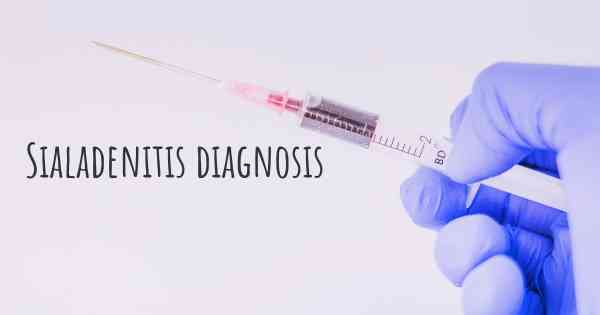How is Sialadenitis diagnosed?
See how Sialadenitis is diagnosed. Which specialists are essential to meet, what tests are needed and other useful information for the diagnosis of Sialadenitis

Sialadenitis is a condition characterized by the inflammation of the salivary glands, which are responsible for producing saliva. It can occur in any of the major salivary glands, including the parotid, submandibular, and sublingual glands. The diagnosis of sialadenitis involves a combination of medical history assessment, physical examination, and diagnostic tests.
Medical history assessment: The healthcare provider will begin by asking the patient about their symptoms, such as pain, swelling, and difficulty in swallowing or opening the mouth. They will also inquire about any recent infections, history of salivary gland stones, or previous episodes of sialadenitis. Obtaining a comprehensive medical history helps in identifying potential risk factors and underlying causes.
Physical examination: The doctor will perform a thorough examination of the affected area, looking for signs of inflammation, tenderness, and swelling. They may also palpate the salivary glands to check for the presence of any masses or blockages. Additionally, they might assess the patient's overall health and look for signs of systemic infection.
Diagnostic tests: To confirm the diagnosis and determine the underlying cause of sialadenitis, several tests may be ordered:
- Blood tests: A complete blood count (CBC) can help identify signs of infection, such as an elevated white blood cell count. Blood cultures may also be taken to identify the specific bacteria causing the infection.
- Imaging studies: Ultrasound, computed tomography (CT), or magnetic resonance imaging (MRI) scans may be performed to visualize the salivary glands and detect any abnormalities, such as stones or abscesses.
- Salivary gland function tests: These tests measure the amount and flow rate of saliva produced by the glands. They can help determine if there is any obstruction or dysfunction in the salivary glands.
- Salivary gland biopsy: In some cases, a small tissue sample may be taken from the affected gland for further analysis. This can help rule out other conditions and provide more information about the underlying cause.
Once the diagnosis of sialadenitis is confirmed, appropriate treatment can be initiated. It typically involves a combination of antibiotics to treat the infection, pain management, warm compresses, and encouraging fluid intake. In severe cases or when complications arise, surgical intervention may be necessary.








